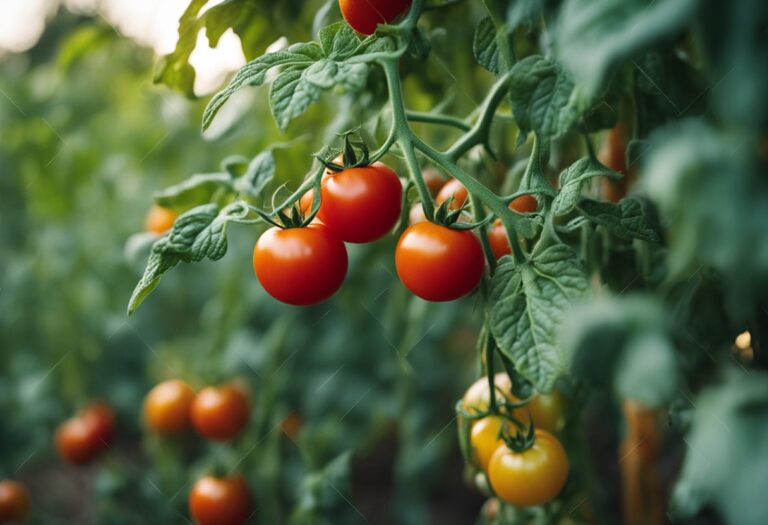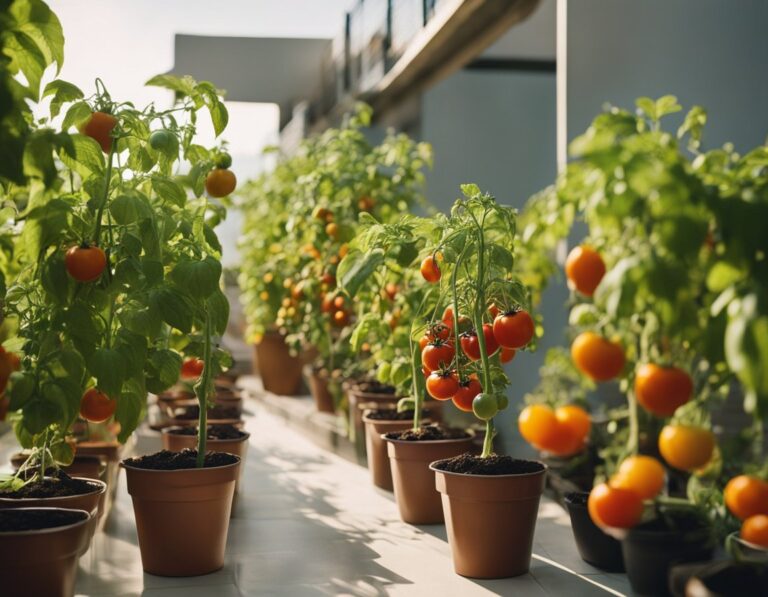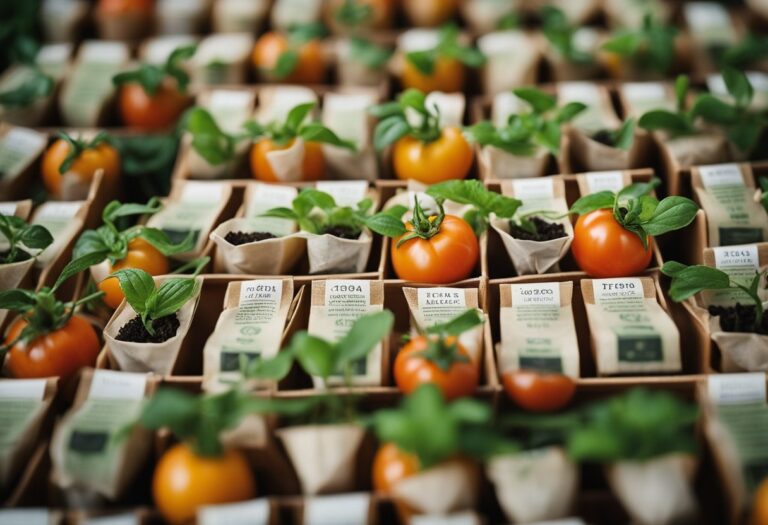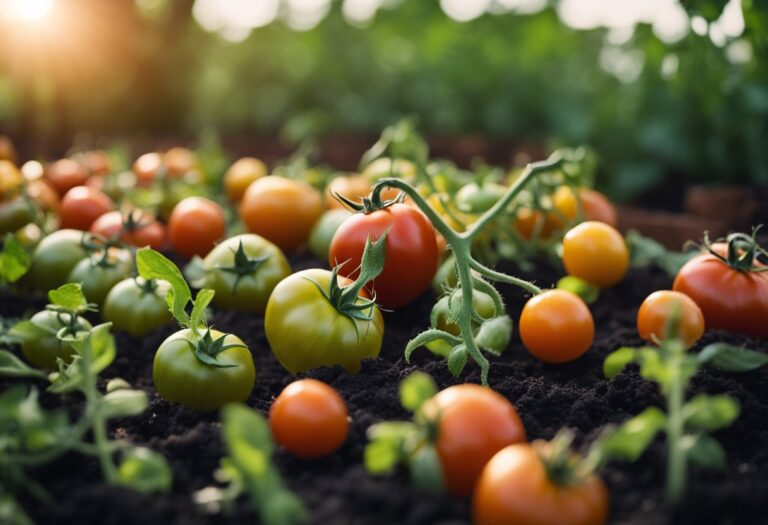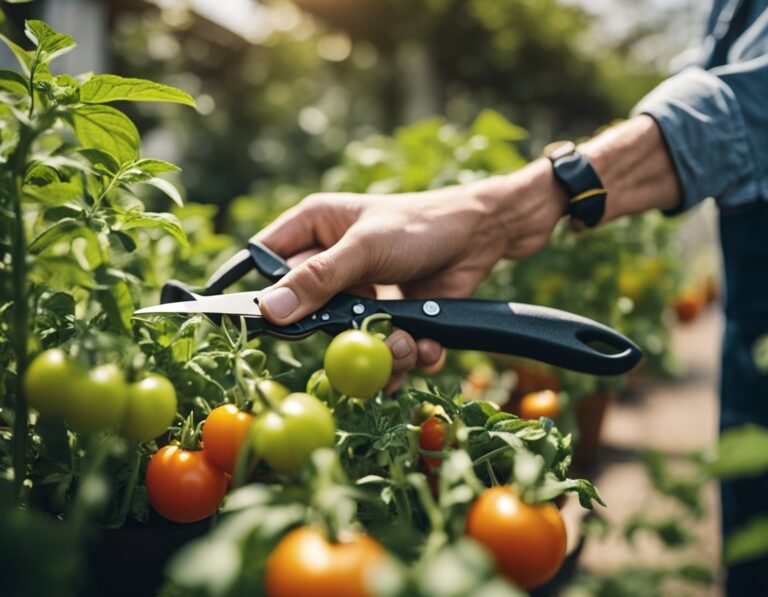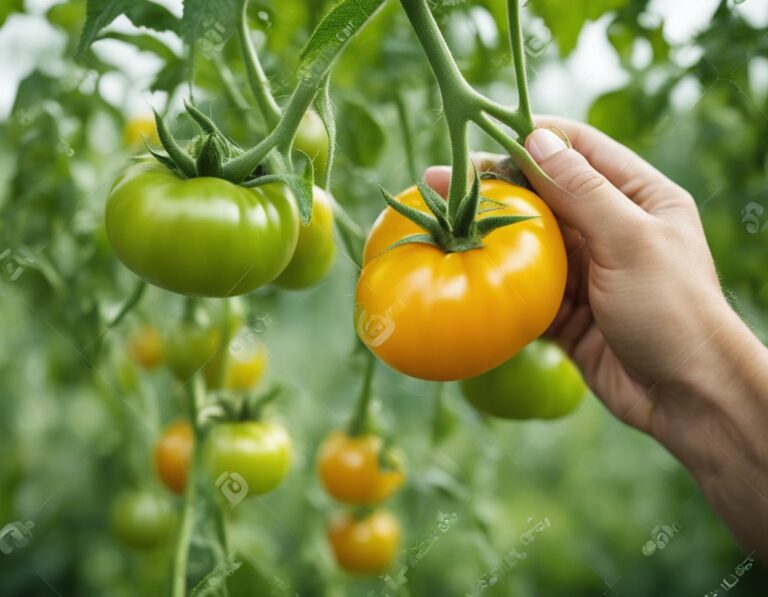Soil Preparation for Tomatoes: Tips for a Successful Harvest
If you want to grow healthy and productive tomato plants, soil preparation is key. The right soil provides the essential nutrients, moisture, and drainage that tomatoes need to thrive. Soil preparation for tomatoes involves testing and improving soil quality, as well as using proper preparation techniques to create a healthy growing environment.
Before you start preparing your soil for tomatoes, it’s important to test its quality. Soil testing can help you determine the pH level, nutrient content, and texture of your soil. Once you know the characteristics of your soil, you can take steps to improve its quality. This might involve adding organic matter, such as compost or manure, to improve soil structure and fertility.
To create the ideal growing environment for your tomato plants, you’ll need to use proper preparation techniques. This might include tilling the soil, creating raised beds, or using no-till methods. Y
ou’ll also need to maintain soil health by watering and fertilizing your plants as needed, and by rotating crops to prevent soil-borne diseases. With the right soil preparation and care, you can enjoy a bountiful harvest of delicious, homegrown tomatoes.
Key Takeaways
- Soil preparation is essential for growing healthy and productive tomato plants.
- Testing and improving soil quality can help create the ideal growing environment.
- Proper preparation techniques and soil maintenance are key to growing successful tomato plants.
Soil Preparation for Tomatoes
If you want to grow healthy and flavorful tomatoes, it’s important to prepare the soil properly. In this section, you’ll learn about the components of soil and the ideal soil type for tomatoes.
Understanding Soil Components
Soil is made up of four main components: minerals, organic matter, water, and air. Minerals provide nutrients to plants, while organic matter improves soil structure and fertility. Water and air are also important for plant growth.
When preparing soil for tomatoes, it’s important to ensure that it has the right balance of these components. Adding compost to the soil is a great way to improve its structure and fertility. Compost also supplies the nutrients that tomato plants need to produce healthy foliage and flavorful fruits.
Ideal Soil Type for Tomatoes
Tomatoes grow best in slightly acidic soil with a pH level between 6.0 and 7.0. Use a soil test to find out your garden’s pH level. If the pH is too high (over 7.0), add sulfur. If your soil’s pH is too low (below 6.0), add lime.
In addition to pH level, the ideal soil type for tomatoes should be well-draining and loose. Sandy loam soil is a great choice for growing tomatoes, as it allows for proper drainage and aeration. If your soil is heavy clay, you can improve its structure by adding organic matter such as compost or aged manure.
Remember, proper soil preparation is key to growing healthy and flavorful tomatoes. By understanding soil components and choosing the ideal soil type, you can ensure that your tomato plants have the best possible environment to thrive.
Soil Testing
Before planting your tomatoes, it’s important to test your soil to ensure it has the proper pH and nutrients for healthy growth. Soil testing is a simple process that can save you time and money in the long run.
Importance of Soil pH
The pH level of your soil is crucial to the growth and health of your tomato plants. A pH level between 6.0 and 6.8 is ideal for tomatoes.
If your soil is too acidic (pH below 6.0), add lime to raise the pH. If it’s too alkaline (pH above 7.0), add sulfur to lower the pH. Testing your soil’s pH level will help you determine how much lime or sulfur to add.
Soil Nutrient Analysis
Tomatoes require certain nutrients to thrive, such as nitrogen, phosphorus, and potassium. Conducting a soil nutrient analysis will help you determine if your soil has enough of these nutrients.
If your soil is lacking in any of these nutrients, you can add fertilizer or other soil amendments to improve its quality. A home kit or a local extension can provide soil test results, which will help you determine what nutrients your soil needs.
By testing your soil before planting your tomatoes, you can ensure that your plants have the proper pH and nutrients to grow healthy and strong. This will help you avoid problems down the road and maximize your tomato harvest.
Improving Soil Quality
To grow healthy and productive tomato plants, you need to start with good soil. Soil preparation for tomatoes is crucial, and improving soil quality is the first step. Here are two essential ways to improve soil quality:
Organic Matter Addition
Adding organic matter to the soil is a great way to improve soil quality. Organic matter such as compost, manure, and leaves can help improve soil structure, increase water-holding capacity, and add essential nutrients to the soil.
To add organic matter to your soil, you can either mix it into the soil or use it as a mulch. Mixing organic matter into the soil is best done before planting, while using it as a mulch can be done at any time during the growing season.
Proper Fertilization
Proper fertilization is another way to improve soil quality. Tomatoes are heavy feeders, and they require a lot of nutrients to grow healthy and productive.
Before planting, you should add a balanced fertilizer to the soil to provide the necessary nutrients for the plants. During the growing season, you can use a liquid fertilizer to supplement the nutrients in the soil.
Remember not to over-fertilize, as this can lead to excessive vegetative growth and reduced fruit production.
Preparation Techniques
Soil Tilling
Tilling the soil is an essential step in preparing the soil for your tomato plants. It helps to break up clumps of soil, aerate the soil, and mix in organic matter. You can use a garden tiller or spade to work organic material into the soil.
Start tilling the soil a few weeks before planting the tomatoes. This will give the soil enough time to settle and adjust to the new conditions.
Crop Rotation
Crop rotation is another important technique to prepare the soil for tomato plants. It helps to prevent the buildup of soil-borne diseases and pests. You should avoid planting tomatoes in the same spot every year.
Instead, rotate them with other crops such as legumes, corn, or cucumbers. This will help to keep the soil healthy and fertile.
Remember, preparing the soil for tomato plants is crucial for a successful harvest. By tilling the soil and practicing crop rotation, you can create a healthy growing environment for your tomato plants.
Maintaining Soil Health
Regular Soil Checks
To ensure that your tomato plants are growing in healthy soil, it’s important to regularly check the soil for its pH level, nutrient content, and moisture level. You can use a soil test kit to check the pH level of the soil.
If the pH level is not in the optimal range of 6.0-7.0, you can add lime to increase the pH level or sulfur to decrease it. You can also use a soil nutrient test kit to check the nutrient content of the soil.
If the nutrient levels are low, you can add organic matter such as compost, manure, or bone meal to the soil.
Prevention of Soil Diseases
Tomatoes are susceptible to various soil-borne diseases such as verticillium wilt, fusarium wilt, and nematodes. To prevent these diseases from affecting your tomato plants, it’s important to practice crop rotation.
This means planting tomatoes in a different area of the garden each year or every other year. You can also use disease-resistant tomato varieties. Another way to prevent soil diseases is to avoid overwatering your tomato plants.
Overwatering can lead to waterlogged soil, which can promote the growth of disease-causing organisms. Finally, you can also use organic fungicides and pesticides to prevent soil diseases.
By regularly checking the soil and taking preventive measures, you can maintain healthy soil for your tomato plants and ensure a bountiful harvest.
Frequently Asked Questions
What is the ideal soil mix for growing healthy tomatoes?
To grow healthy tomatoes, you need well-drained, fertile loam with a pH of 6.0-7.0. Make sure the soil is rich in organic matter, such as compost or well-rotted manure. You can also add bone meal or blood meal to provide additional nutrients for your plants.
What are some tips for preparing soil for tomatoes in raised beds?
If you are growing tomatoes in raised beds, make sure the soil is loose and well-aerated. You can add organic matter, such as compost or leaf mold, to improve soil structure and fertility. Also, consider adding a layer of mulch to help retain moisture and suppress weed growth.
How can I improve poor soil for growing tomatoes?
If you have poor soil, you can improve it by adding organic matter, such as compost or well-rotted manure.
You can also add lime to raise the pH of acidic soil or sulfur to lower the pH of alkaline soil. Additionally, you can add bone meal or blood meal to provide additional nutrients for your plants.
What are some common mistakes to avoid when preparing soil for tomatoes in pots?
When preparing soil for tomatoes in pots, avoid using heavy or compacted soil. Instead, use a well-draining potting mix that is rich in organic matter. Also, make sure the pot has drainage holes to prevent waterlogging. Finally, avoid over-fertilizing your plants, as this can lead to nutrient burn.
Are coffee grounds beneficial for tomato plants?
Coffee grounds can be beneficial for tomato plants, as they contain nitrogen, phosphorus, and potassium. However, they should be used in moderation, as too much can make the soil too acidic.
Additionally, coffee grounds should be composted before use to prevent nitrogen tie-up.
Is mulching around tomato plants recommended for optimal growth?
Mulching around tomato plants is recommended for optimal growth, as it helps retain moisture, suppress weed growth, and regulate soil temperature.
Organic mulches, such as straw, grass clippings, or leaves, are ideal for tomato plants. However, avoid using plastic mulch, as it can lead to waterlogging and root rot.

